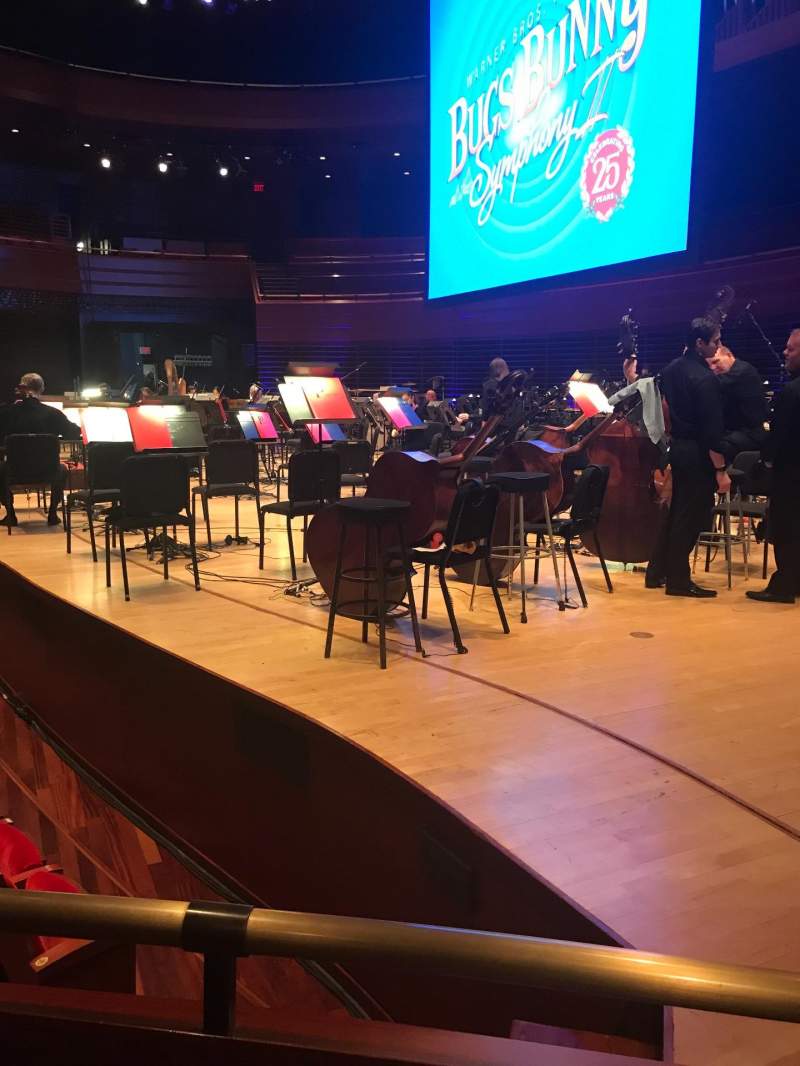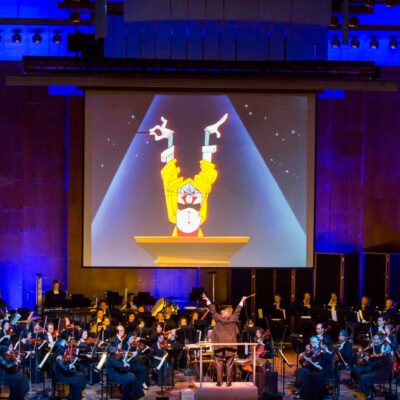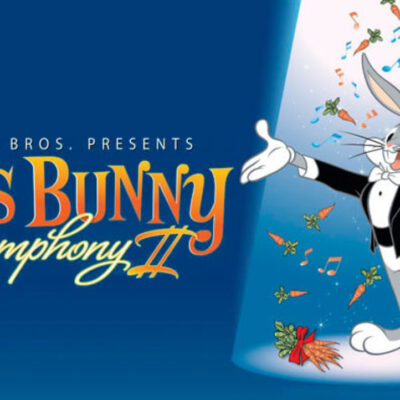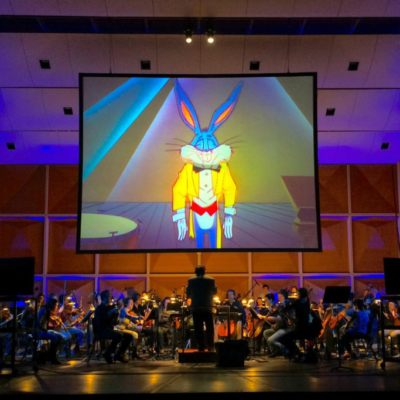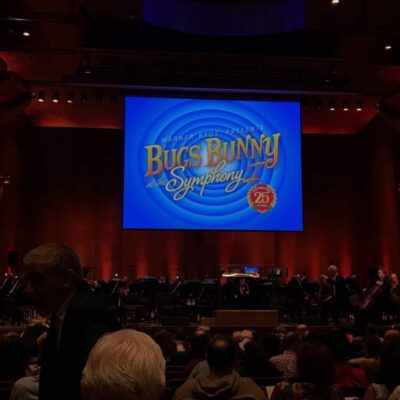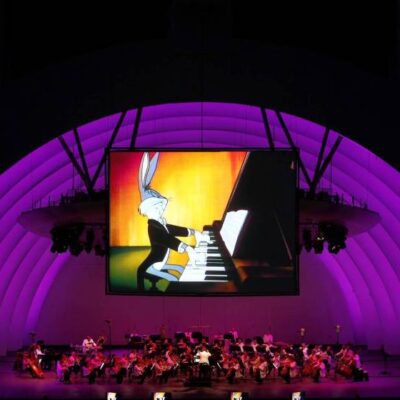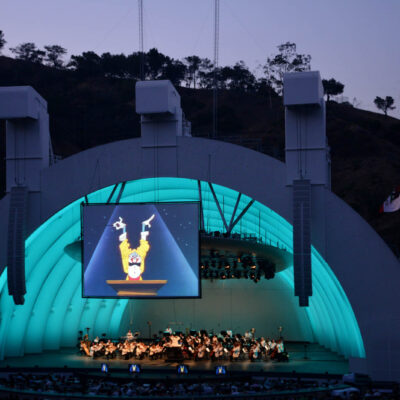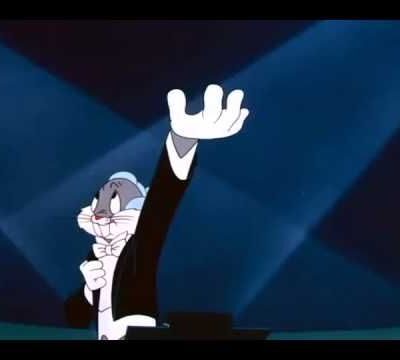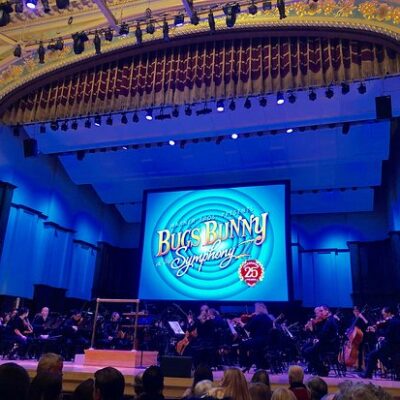BUGS BUNNY AT THE SYMPHONY
| A Las Puertas del Palacio | MÉXICO, CIUDAD DE MÉXICO Octubre/2011 |
Bugs Bunny at the Symphony
There’s an old joke that if you stand on a street corner of any great American city and sing the first few bars of Wagner’s “The Ride of The Valkyries” to passersby, 90% of the world will find the mantra “Kill da wabbit” uncontrollably popping into their heads.
If the experiment was conducted outside the Philadelphia Orchestra, where decades of music lovers have heard “real” Wagner performed in the most glorious manner possible, in a lineage pretty much going back to Wagner himself, the percentages (and mental images) might skew a bit more favorably toward breast-plated soprano Valkyries in horned helmets. But still, the association of Looney Tunes and Wagner – and Rossini, Liszt, J. Strauss, von Suppé, Smetana, Tchaikovsky, and any other number of golden age composers – is an indelible one. And it’s no accident. Because hundreds of millions of people, in America and the world over, first experienced classical music (and opera) at the hands of Bugs Bunny, Daffy Duck, Elmer Fudd, and the rest of the Looney Tunes ensemble, cavorting to the masterful classically-infused cartoon scores of Carl Stalling and Milt Franklyn.
For Stalling and Franklyn, the cartoons may have been hilarious, but the creation of the music was no laughing matter. They arduously and passionately worked with the same glorious Warner Bros. Studio Orchestra – and within the same studio music hierarchy – as did the more famous (and better paid) WB feature film composers of the day – Max Steiner, Erich Korngold, Bernard Herrmann, and others. But even though their animated shorts were only seven minutes long (instead of a feature’s running time of two or three hours) and starred Bugs Bunny (instead of Bogart or Bette or Bacall), Stalling and Franklyn composed with a compositional magic that was irresistible to audiences of the 1930’s, 40’s, and 50’s – and still is today. They established an unmistakably distinct “Looney Tunes sound” – and although movie fans might not have been able to define it, they instantly knew it (and loved it) when they heard it.
Born in 1891 in Lexington, Missouri, Carl Stalling was a piano prodigy at age 6, and he cut his musical teeth on that new invention known as “moving pictures.” He was composing music for the movies before the movies actually even HAD music – or, at least, on actual soundtracks. By the age of 12, he was the principal theater pianist of his hometown’s little silent movie house, improvising scores day after day to the flickering black and white images on the silver screen. By his early twenties, he moved to the big city, where his improvised film scores became much more complex thanks to the grand theater organs found in Kansas City’s and St. Louis’ elaborate new movie palaces. He expanded his talents to composing and conducting for an actual theater orchestra at Kansas City’s Isis Theatre.
In a twist of fate that would change the direction of the rest of his life, Stalling made friends with a young, unknown Kansas City animator – a penniless guy named Walt Disney – and discovered the world of animation. Stalling and Disney ended up in Hollywood, and after two years of working with Disney (as well as with the innovative Ub Iwerks) young Carl Stalling moved over to Warner Bros., where he would spend the rest of his career.
Milt Franklyn was, at first, Stalling’s arranger and orchestrator at Warner Bros., but later took on more and more compositional duties. Upon Stalling’s retirement in 1958, Franklyn assumed the mantle of Looney Tunes’ composer himself. Together, the two of them – working under visionary animation directors like Chuck Jones, Friz Freleng, Tex Avery, and Bob Clampett – composed scores that were every bit as evocative as the cartoons they accompanied.
Looney Tunes and Merrie Melodies were always populated with hit songs of the day – that was by design, in order to push the vast Warner Bros. song catalog to audiences and sheet music buyers, a sort of 1940’s YouTube. But it was Stalling’s and Franklyn’s pure orchestral scores that truly dazzled. A Road Runner cartoon would almost become a ballet, full of orchestral sound and fury that would inevitably cascade (and decrescendo) down to the whisper of an alto flute’s tri-tone as Wile E. Coyote almost silently hit the bottom of yet another Painted Desert crevasse, way way below. “The Rabbit of Seville” was composed completely in the style and orchestral fabric of Rossini himself, while the gigantic “What’s Opera, Doc?”, with a full-bore Wagnerian-sized instrumentation, combined not only the major leitmotifs of all four Ring Cycle operas, but of “Tannhauser,” “Lohengrin,” “The Flying Dutchman,” and “Rienzi” as well. Eight Wagner operas in 6 minutes and 48 seconds. (And there are those – including some musicians — who think that this is truly the way to experience them!)
So, in reality, it is no surprise to find the genius of Carl Stalling and Milt Franklyn coming (again) to The Philadelphia Orchestra, because these two composers have earned their moment in the limelight, and their place upon this most hallowed of concert platforms.
It is a particular joy to perform this concert with the fabulous Philadelphia Orchestra. For starters, our history together goes back almost three decades. The Philadelphia Orchestra was the very first of the “Big Five” orchestras to embrace our original concert, “Bugs Bunny On Broadway,” which we have performed numerous times together at The Mann Music Center, to packed summertime audiences.
More importantly, and to the point: when the Philadelphia Orchestra launches into the classical music excerpts contained in these cartoons – especially the Wagner in “What’s Opera, Doc?” – they play it with a luxuriant and breathtaking authenticity and passion that one hardly finds anywhere else in the world.
BUT – the most “Philadelphia” moment of all occurs 2/3rds of the way through the cartoon “Long-Haired Hare,” when Bugs Bunny dons the white tie and tails, and white mane, of the great Leopold Stokowki, and makes his unforgettable entrance into the “cartoon orchestra” on the big screen, while all the cartoon musicians around him ecstatically shout “Leopold! Leopold! Leopold! Leopold!”
Of course, Leopold Stokowski was not only one of the most celebrated conducting titans of the entire world in all of history, he was The Philadelphia Orchestra’s iconic music director from 1912 to 1941. When we first performed “Bugs Bunny On Broadway” with The Philadelphia Orchestra in the early 1990’s, I knew this moment would be extraordinary. After all, at that time there were still a few musicians in the orchestra who had actually played under Stokowski!! But what I wasn’t prepared for was, as the “cartoon orchestra” started chanting “Leopold! Leopold! Leopold!”, so did the very real and human members of The Philadelphia Orchestra on stage! And then it spread throughout the audience. And within seconds, the entire Mann Music Center was ringing out with hundreds, if not thousands, of musicians and fans screaming “Leopold! Leopold! Leopold!” It was truly a full circle of “art imitating life imitating art.” It was a magical moment that could ONLY have happened in Philadelphia. (And I hope it will happen again this time, in 2019, at the Kimmel Center!!)
(As a historical footnote, it should be noted that the real-life Stokowski was no stranger to animation, and in fact he loved the medium. Of course, his groundbreaking involvement in Disney’s epic “Fantasia” – both in conducting/recording the music with The Philadelphia Orchestra, AND appearing live on-screen – is the stuff of which legends are made. On the silver screen, he even got to shake hands with Mickey Mouse, although later, Stokowski would say – with a smile – that actually, Mickey Mouse got to shake hands with HIM!)
When my partner-in-crime David Wong and I concocted these concerts – first “Bugs Bunny On Broadway” back in the last century (1990), followed by “Bugs Bunny at the Symphony” I and II in 2010 and 2013 – we had no idea that they (and we) would tour them almost continuously for 30 years, playing to millions of concertgoers worldwide, and with a breathtaking array of world class symphony orchestras and venues ranging from the Los Angeles Philharmonic at the Hollywood Bowl (22 times!) to The New York Philharmonic at Lincoln Center to the Sydney Opera House to the Boston Pops at Symphony Hall – and of course, The Philadelphia Orchestra. We thought our debut 1990 sold-out Broadway run at The Gershwin Theatre was a fluke that would not be replicated anywhere else. We were wrong.
I guess we should not have been surprised, because the classic Looney Tunes and Merrie Melodies projected in this concert, up on the big screen above the live orchestra, are indeed brilliant. But more importantly, so is the music. Audiences everywhere love the scores of Carl Stalling and Milt Franklyn. Orchestral musicians love playing them too. Stalling and Franklyn were the real deal. Although they oftentimes took their musical cues from European composers, their mini-masterpieces were (and still are) quintessentially American. Brash, fresh, exciting, fantastically bombastic, in your face. Perfect accompaniment for Bugs Bunny and his friends.
